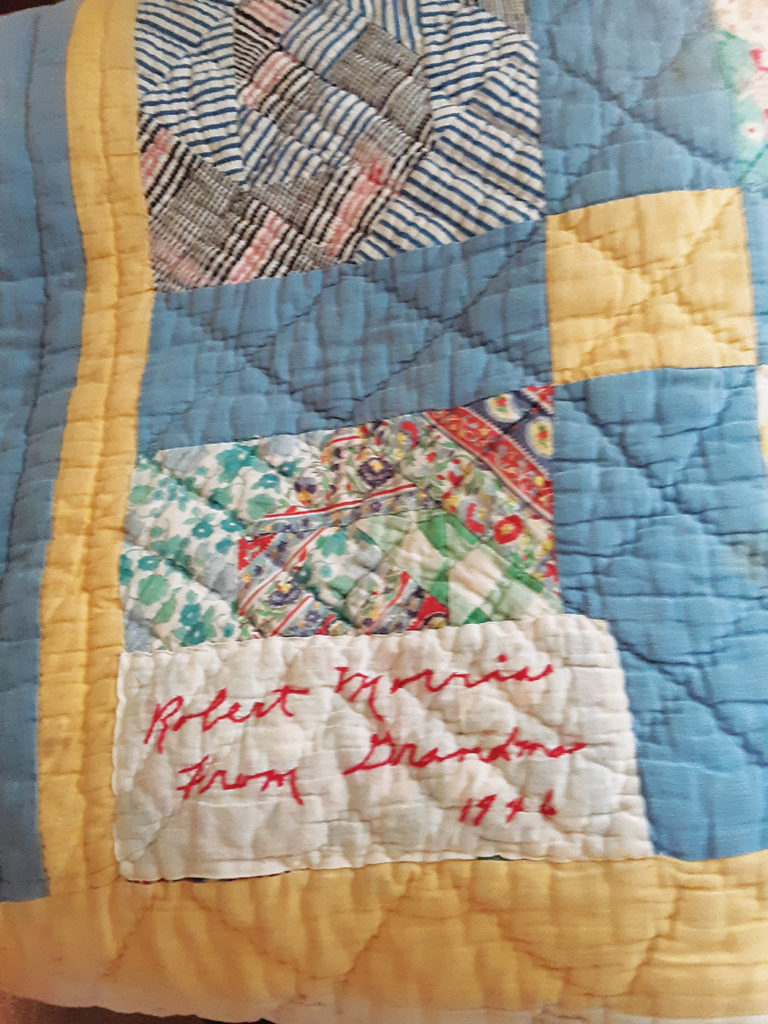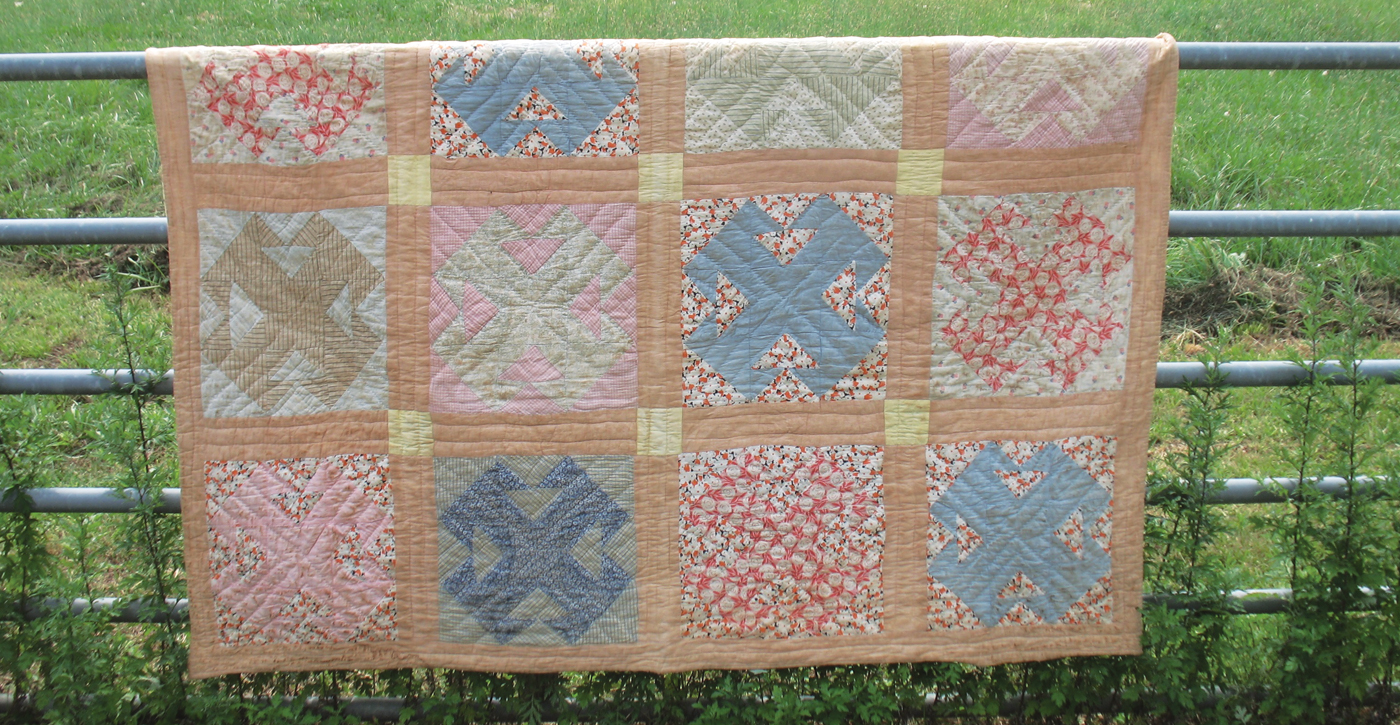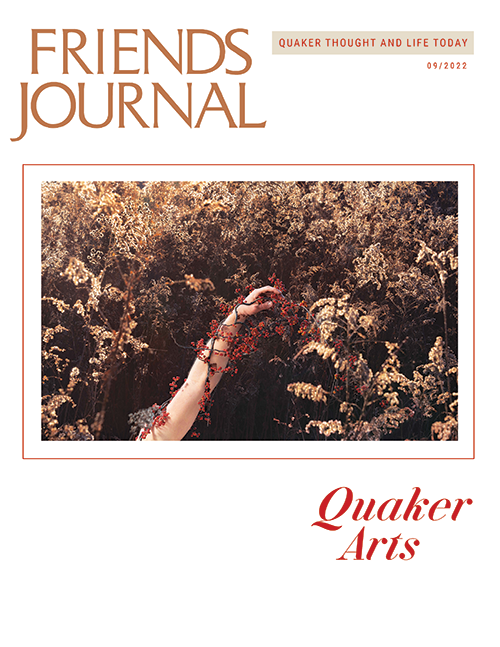The world is hard on all quilts, but it is especially hard on quilts like the ones that have been passed down in my family. Pieced by Quaker women who attended Up River Meeting in Belvidere in eastern North Carolina, our quilts were never intended to be preserved as art objects. The makers—my grandmother and great-grandmother—made the quilts to be functional and warm.
Even when gently used and stored in cedar closets where moths presumably cannot corrupt, fabric and thread gradually unravel. Our family quilts were not gently used; they were vigorously loved. After they were retired as bedclothes, they became picnic blankets; they were flung over a card table or clothes-drying rack to serve as tents; and they were spread out as landscapes for Matchbox car journeys and doll tea parties. Threads loosened, fabric ripped, and batting leaked out.
Eventually the old quilts were folded and tucked away in chests where sepia stains bloomed in the dark. Much later they were pulled back into the light and given to the grandchildren and great-grandchildren. Still loved, they had become nearly too worn and dusty for continued use.
I once hand-washed one of the quilts my grandmother Mary Pleasant Winslow made. My quilter friends warned me that washing a quilt is considered at best a risky business, but in this case I felt it had to be done. The quilt had gathered a good bit of dust over the decades and had acquired a peculiar scent. So I submerged it in cool water in the bathtub, gave it a light dusting of Ivory Snow, and gently kneaded the fabric before leaving it to soak.
The water turned the color of strong tea. The worst of the grime of 60 years swirled down the drain. I rolled the quilt, squeezed out as much water as possible, and draped it on the clothesline to dry. Stepping back to admire it, I could see now that the fabric triangles formed hexagons, and the stitching that bound the quilt was done in concentric hexagons. The low golden light as the sun set that evening made the quilt look bright and fresh. I couldn’t have been happier.
I have two of Grandma’s quilts and one made by her mother, Martha Rountree Winslow. Grandma Mat, as she was known, sewed a patch near one edge that dedicated the quilt to my father: “Robert Morris from Grandma 1946.” Her quilt features a pinwheel design with an undimmed border of bright blue and golden yellow. It is likely the oldest of my three quilts, and it is certainly the most ragged.

Martha Rountree Winslow, “Robert Morris from Grandma 1946”, 64″ x 82″, quilt.
Had things fallen out differently, I would like to think I could mend my ancestral quilts: undo the shredded sections of fabric and stem the bleed-out of batting. But despite excellent sewing genetics on both sides of my family, I inherited no such skills. Born with a yearning to weave things together the way these women did, I am barely able to sew buttons on when they fall off. Even that is a clumsy business, with unfortunate knobs and tangles of thread on the backside of every reattached button.
And though they are important to me, my quilts aren’t valuable enough to warrant professional restoration. They are cutter quilts, in such disrepair that they would usually be salvaged only to make smaller projects like placemats or throw pillows.
But I chose to keep the quilts intact. Not valuable as art, they are still fine examples of the household arts practiced over previous generations. Some of the fabrics in these quilts were once favorite garments, with associations to friends and family members and important events. The scraps were saved to fashion coverlets for the next generation, guaranteeing at least a slight extension of the life of both the fabric and the memories.
I am convinced that even practical quilting is a heroic effort to bind together what life often seems intent on wrenching apart. If I feel incapable and sorry for not being able to do my part to continue this tradition by making my own quilts or mending the old ones, at least I have preserved my family quilts well enough to keep them moving forward.






1 thought on “The Art of Quaker Quilts”
Comments on Friendsjournal.org may be used in the Forum of the print magazine and may be edited for length and clarity.